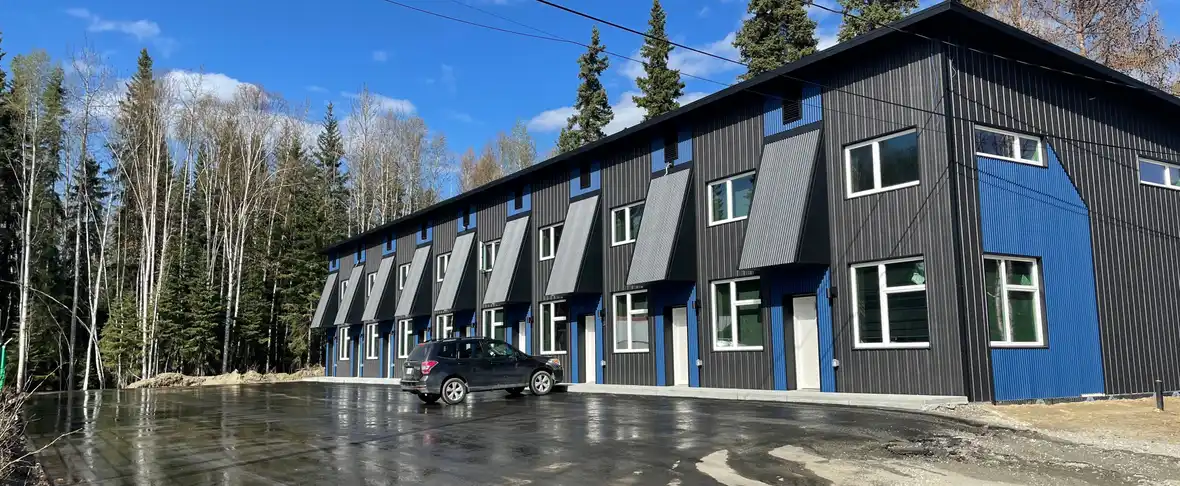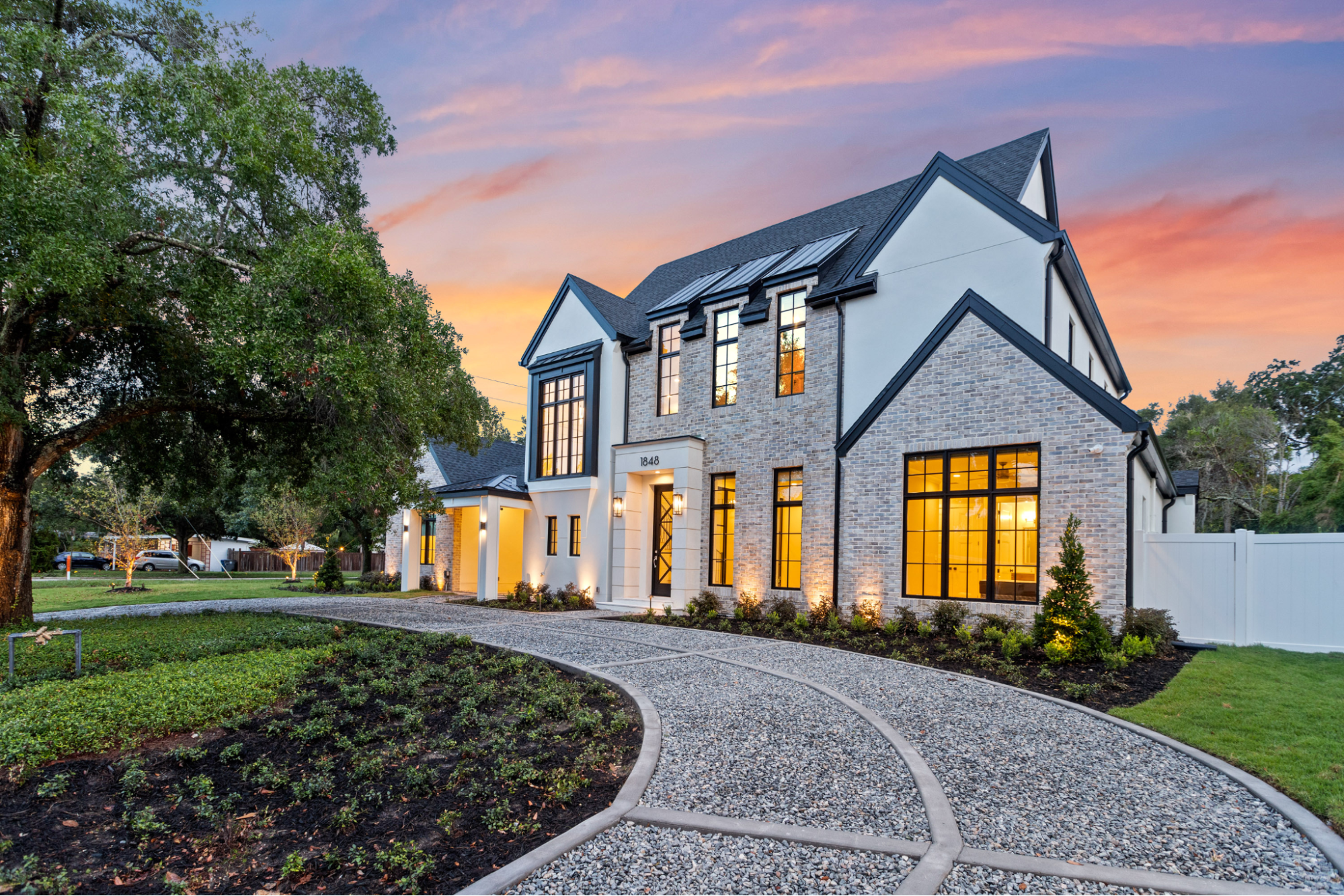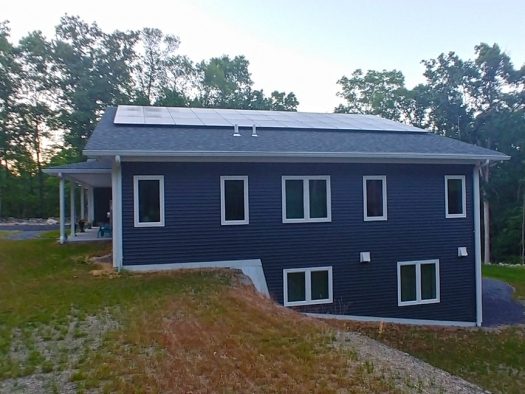
2 Story ICF Construction: An Ultimate Guide

Insulated Concrete Forms (ICFs) technology has evolved significantly over the years, which has led to its growing adoption in residential construction projects.
In fact, modern ICF technology is revolutionizing the construction industry, though particularly for two-story homes.
To give you a better understanding of the impact it’s making, we’re taking a closer look at two story ICF construction as a whole.
Are you ready?
What Are Insulated Concrete Forms Exactly?
Insulated Concrete Forms (ICFs) are advanced building blocks made from expanded polystyrene (EPS) rigid insulation, which are separated by plastic webbing and filled with concrete.
The EPS provides excellent thermal insulation, the plastic webbing offers structural support, and the concrete adds strength and durability. The result?
A robust, energy-efficient structure.
Benefits of Using ICF Construction for Two-Story Homes
Two-story ICF homes tend to have a lot of benefits over traditionally built homes. For example:
Enhanced Energy Efficiency
ICFs boast a high R-value of 23+, which significantly reduces heating and cooling costs. The continuous insulation provided by ICFs eliminates thermal bridging for a consistently energy-efficient home.
Superior Durability and Strength
ICFs provide an incredible amount of structural integrity, which could only benefit two-story homes. They not only demonstrate exceptional resistance to natural disasters such as hurricanes, tornadoes, and earthquakes, but they also require minimal maintenance because they are resistant to moisture, rot, and pests.
Exceptional Acoustic Insulation
Another benefit is that two-story homes built with ICFs are notably quieter because of their inherent soundproofing properties. The combination of concrete and foam insulation dampens sound transmission to create a peaceful living environment.
The Sound Transmission Class (STC) ratings for ICF walls are typically much higher than those of traditional wood-frame walls, and provide superior noise reduction.
Comprehensive Fire Resistance
ICFs are naturally fire-resistant and significantly slow the spread of fire. Typically, ICF homes can achieve fire ratings of up to four hours, and meets or exceeds safety standards in many regions.
Design Flexibility and Aesthetic Options
ICFs also offer design flexibility to create intricate architectural features such as curved walls and large open spaces:
Two-story ICF homes can incorporate tall windows, open floor plans, and multilevel rooflines.
The ease of customization with ICFs means that homeowners can achieve their desired aesthetic while also benefiting from the structural advantages of ICF construction.
Notable projects using ICFs include modern, minimalist designs as well as traditional, ornate structures that showcase the versatility of this efficient and durable construction method.
The Two-Story ICF Construction Process

Now that you understand the benefits and design possibilities, here’s what you need to know about the two-story ICF construction process:
Planning and Permitting
The construction of a two-story ICF home begins with planning and obtaining the necessary permits.
To make the process easier, you should work with contractors familiar with ICF techniques. That way, you can ensure you will be in compliance with building codes and construction quality.
Foundation
Once the footings are in place the ICF blocks are placed directly on to the footings. Dowels from the footings provide the connection and lateral support to the foundation walls. The ICFs provide continuous insulation from the footings to the top of the wall.
Wall Assembly
Wall assembly is the next step.
The ICFs are stacked in a running bond pattern with reinforcement bars placed horizontally and vertically according to appropriate design criteria. Once this is finished, the first floor of ICFs are stacked and placed with concrete. Then, the second floor is stacked, and concrete is placed. Anchors are used for the roof attachment and are embedded in the ICF concrete.
By using this method, the ICFs form a solid, steel-reinforced concrete core that provides exceptional strength and durability. Plus, the interlocking design simplifies the construction process and reduces the need for multiple construction stages.
Utilities and Finishes
Utilities such as electrical wiring and plumbing are easily integrated into the ICF walls, thanks to the flexible nature of the blocks.
Grooves can be cut into the foam to accommodate these systems in order to help ensure a seamless installation. Additionally, various finishes, such as siding, stucco, and brick, can be applied directly to the ICF exterior.
This flexibility allows for a personalized finish that meets the homeowner’s aesthetic preferences while also maintaining the structural benefits of ICF construction.
Cost Analysis and Long-Term Savings
The initial cost of ICF construction may be higher compared to traditional wood-frame construction. However, the long-term savings are substantial. For example, you can have:
Lower energy bills
Reduced maintenance costs
Potential insurance
Case Studies and Real-World Examples
At Fox Blocks, we have constructed many two-story ICF homes. Here are some of our most noteworthy projects:
Mayura Manor Case Study

The Mayura Manor project exemplifies the remarkable advantages of building with ICF technology. Featuring an energy-efficient two-story design, this home benefits from reduced heating and cooling costs which highlights a significant long-term savings. The durability and aesthetic appeal of Mayura Manor serve as a testament to the superior performance and flexibility of ICF construction.
Sofia Court Case Study

The Sofia Court project highlights the benefits of ICF construction in a multi-family residential setting. This two-story complex boasts enhanced energy efficiency that drastically reduces utility costs for residents. The robust construction also ensures superior sound insulation and resilience against extreme weather to provide a safe and comfortable living environment.
Comparing ICFs to CMUs for Two-Story Construction
When evaluating construction methods for two-story homes, it’s essential to compare ICFs to Concrete Masonry Units (CMUs) to understand their respective advantages and disadvantages.
Let’s compare:
Insulation
ICFs construction projects tend to have more insulation with higher R‑values— a direct result of their EPS foam on both sides of the concrete core.
In contrast, while CMUs have quality insulation, they may need additional insulation materials to make them more efficient.
Flexibility
Design flexibility is another advantage of ICFs that allows for curved walls and various finishes like stucco, brick, and stone. CMUs offer design flexibility but are better suited for simpler, straight-wall designs and may require additional treatments for desired aesthetics.
Installation
Building with ICFs is faster to build and more cost-effective. CMUs, while cheaper initially, involve slower, more labor-intensive construction and potentially higher costs because of extra insulation and maintenance needs.
Build Your Dream Two-Story Home with Fox Blocks
Partner with Fox Blocks to create a durable, energy-efficient two-story home.
Our innovative ICF solutions streamline the construction process and provide exceptional performance. Visit Fox Blocks to explore our range of ICF products and learn how we can help you build the home of your dreams!
Contact us today for more information